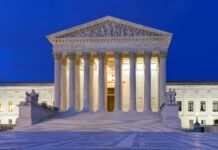

The Dallas Court of Appeals recently reversed a jury’s
finding of fraud based, in part, on the defendant’s adherence to real estate industry
standards concerning the sale of condominium.
Defendant Ebby Halliday Real Estate, Inc. (“Ebby”) listed a
condominium on the Multiple Listing Service (“MLS”), noting the property’s
square footage as “1,178 / Tax.” The narrative field described the property as
a “[d]arling 1,178 sq. ft.” unit. The Dallas Central Appraisal District’s
(“DCAD”) records also listed both the “living area” and the “total area” of the
unit at 1,178 square feet. However, the 1,178 square feet included the balcony
and garage, and thus was not the unit’s “livable” square footage as a person
would commonly understand that term.
Plaintiff Kevin Dugas (“Dugas”) purchased the unit relying
on the listing’s description of the property’s square footage. After the
transaction closed, Dugas measured the unit and discovered that its “livable”
square footage was only 885 square feet. Dugas sued Ebby and asserted claims
for violations of the Deceptive Trade Practices Act (“DTPA”), statutory fraud,
and negligent misrepresentation. A jury found that Ebby engaged in false,
misleading, or deceptive trade practices and committed statutory fraud, and
awarded Dugas the amount he claims he overpaid for the unit. Notably, however,
the jury also found for Ebby regarding its affirmative defense to Dugas’ DTPA
claim that it gave reasonably and timely written notice to Dugas on its
reliance on written information from official government records that, if
false, Ebby did not and could not reasonably have known of such falsity.
Following the jury’s verdict and post-trial motions by both
sides, the trial court rendered judgment for Dugas and stated that it had
disregarded the jury’s answer regarding Ebby’s affirmative defense. Ebby
appealed.
The Dallas Court of Appeals looked at whether Ebby misrepresented the square footage of the unit by listing the square footage as “1,178 / Tax” on the MLS. Ebby’s expert testified at trial that the term “/ Tax” is understood within the real estate industry to mean the source of the square footage information, which in this case was DCAD. Additionally, both Ebby and its expert testified that a home’s “square footage,” including the “square footage” listed on DCAD, is understood in the real estate industry to mean its “livable” square feet. Based on this information, the Court of Appeals interpreted the “1,178 / Tax” as a representation by Ebby that DCAD had reported the subject unit as having 1,178 “livable” square feet. Thus, relying on real estate industry standards, the Court of Appeals found that Ebby accurately reported the unit’s “livable” square footage. This occurred despite the fact that evidence at trial showed that DCAD information is often unreliable. Accordingly, relying in part on this interpretation, the Court found the evidence legally insufficient to support the jury’s finding that Ebby misrepresented a past or existing material fact, reversed the jury verdict, and rendered judgment that Dugas take nothing.
By: Paul Chappell





